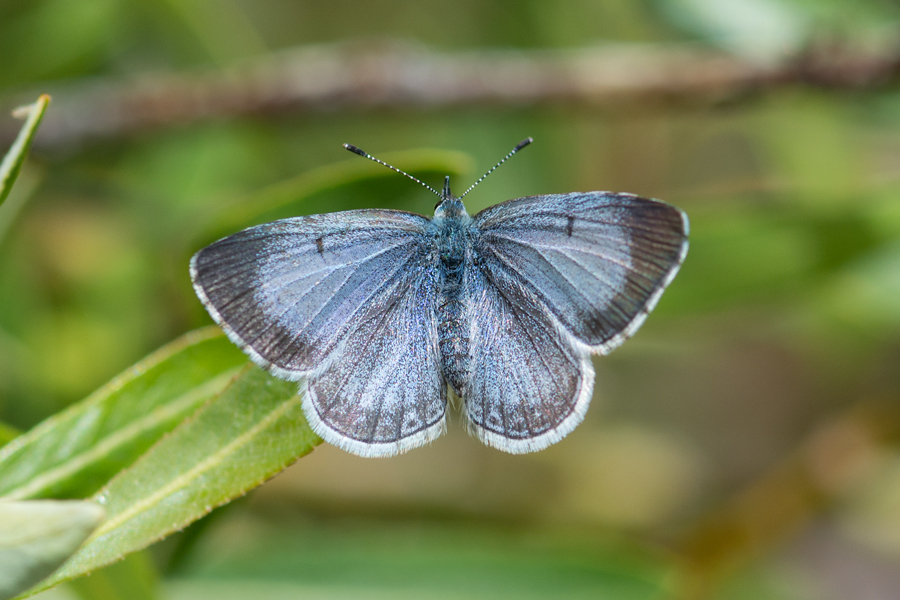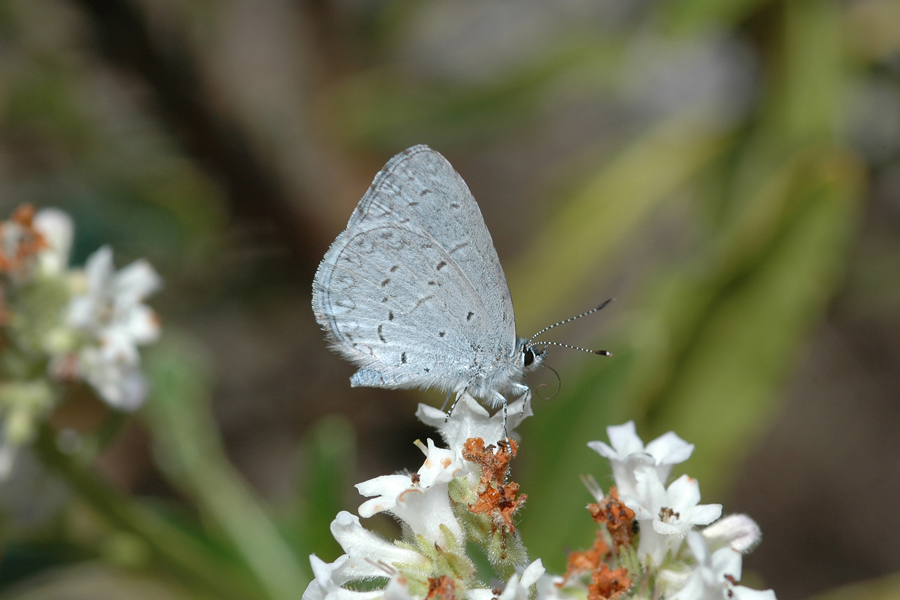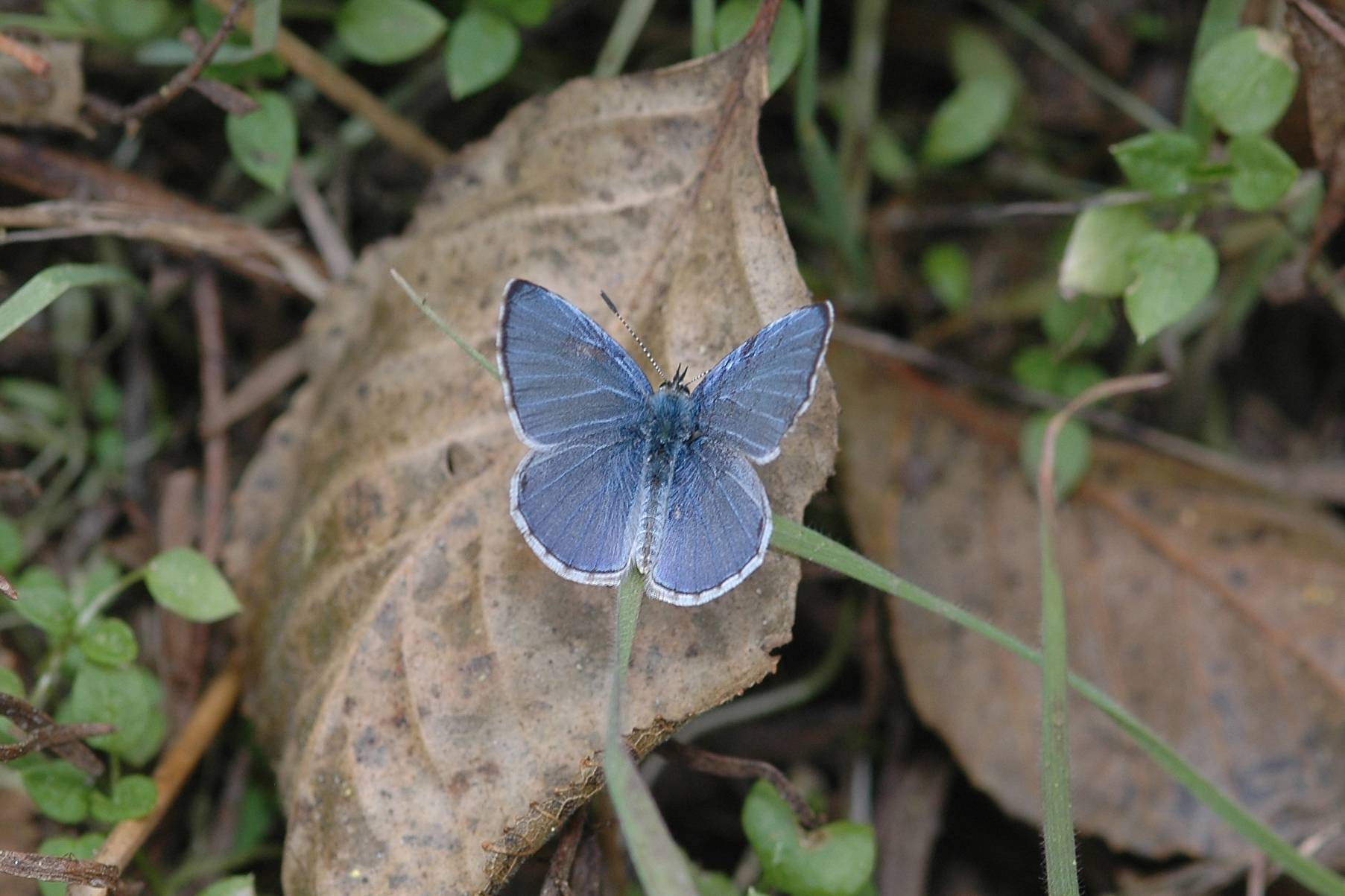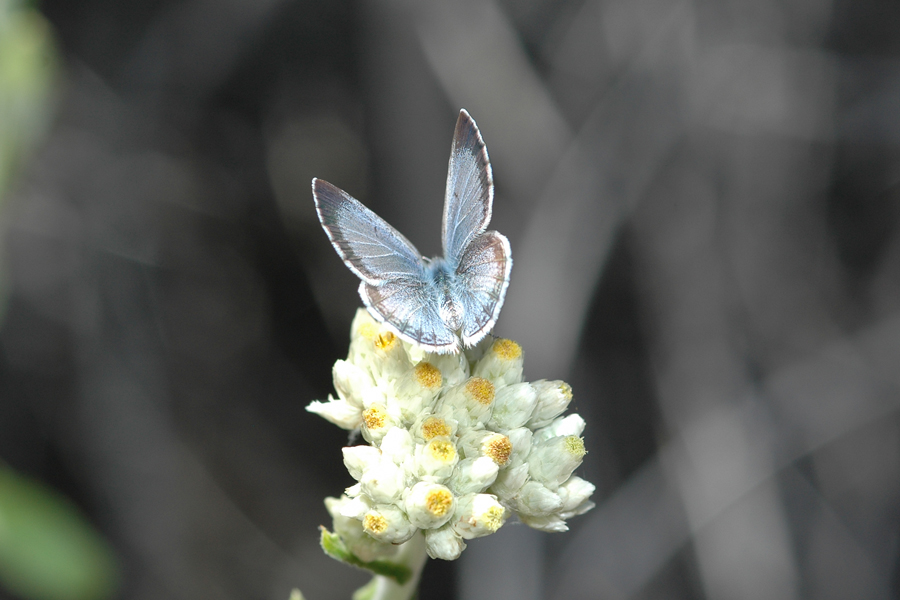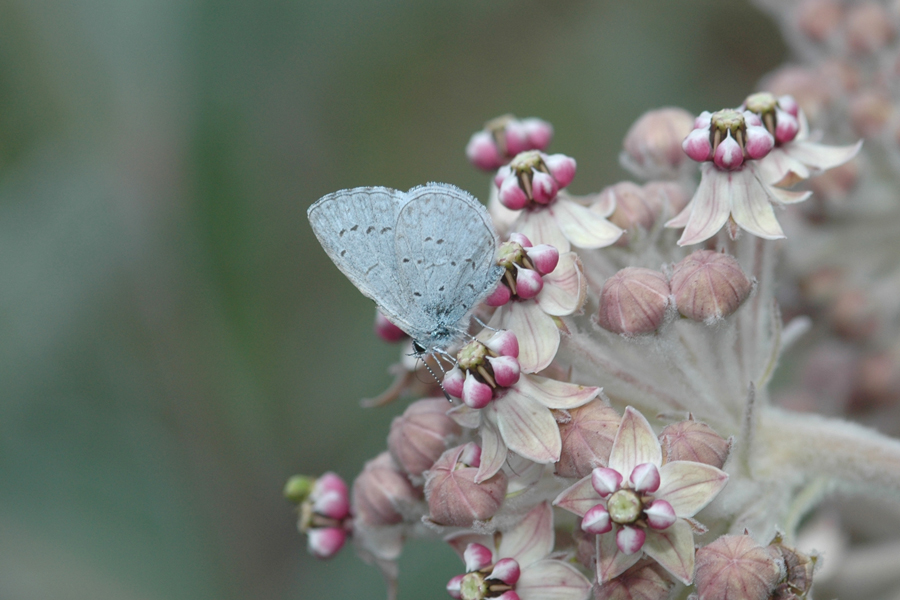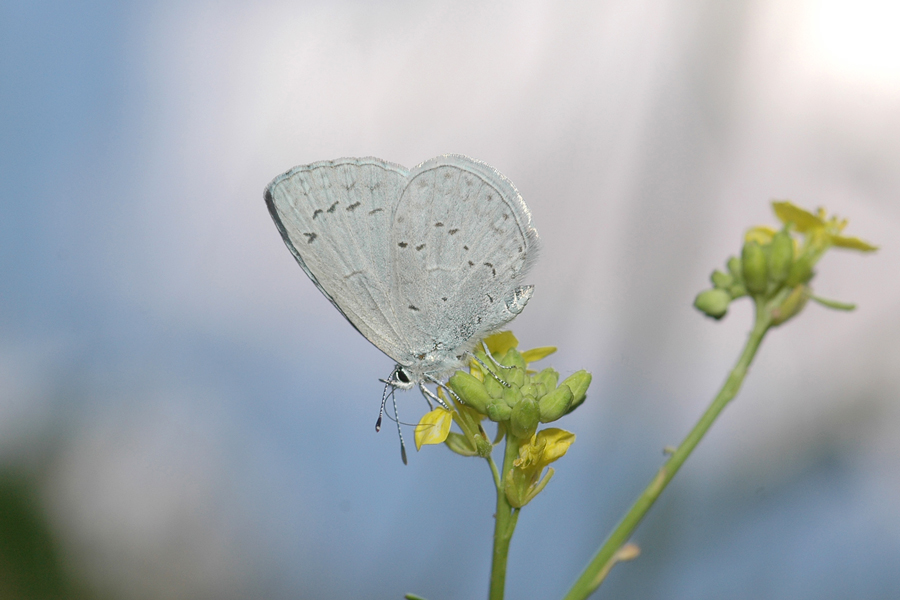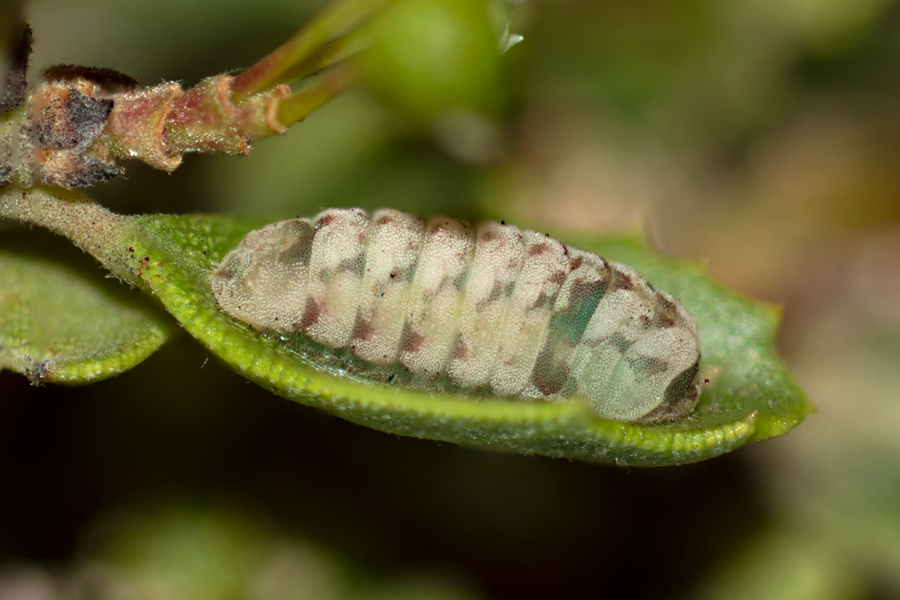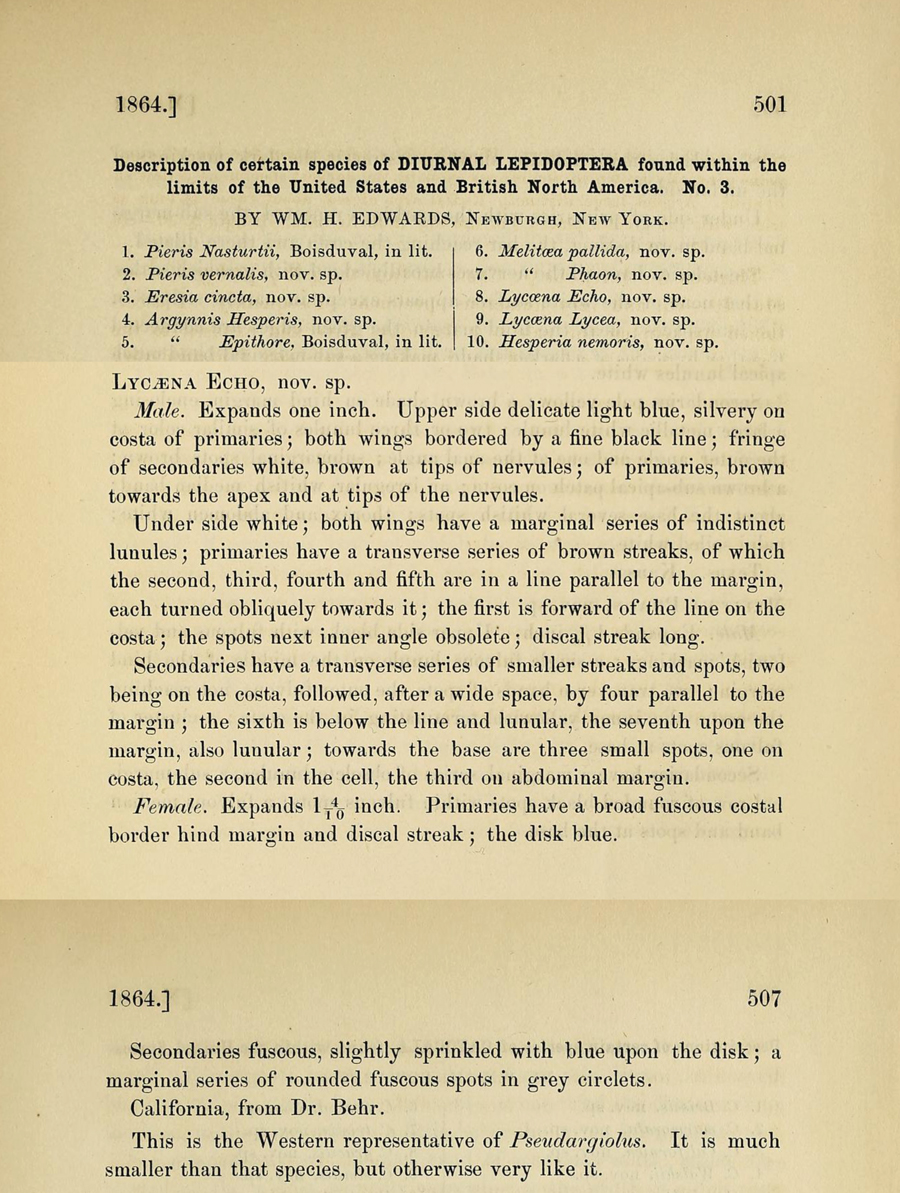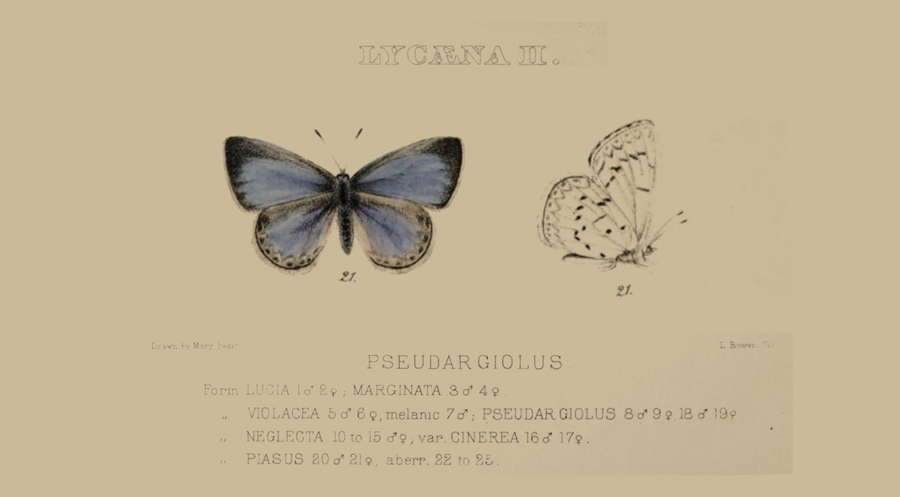Celastrina echo echo
Echo Blue
This blue is usually seen near their food plants - often Ceanothus - with closed wings, showing weak gray markings against a silvery-white ground color. Both sexes have blue dorsal coloration, but they're easy to distinguish thanks to the dark borders at the wing edges: in females these are very thick, especially on the forewings. They can use a few odd plants as larval food, but in our area I usually see them associated with Ceanothus. They can be found in some places early in the spring, or even in the winter if conditions allow; I have photographs from January 25th, 2007 and January 9th, 2009 in the San Gabriels at West Fork of the San Gabriel River. There is a summer brood as well, and it isn't unusual to see these well into July.
Female Celastrina echo echo, warming up in the morning at Alder Creek. May 16, 2014.
Ventral of Celastrina echo echo, the echo blue. Also called a spring azure by some. Sunset Peak, San Gabriels, May 22, 2007.
Male echo blue from West Fork trail up San Gabriel Canyon, San Gabriel Mountains, January 19, 2009.
A female echo blue. Malibu Creek, January 15, 2006.
Ventral of Celastrina echo echo from Tehachapi Mountain Park in Kern Co, June 28, 2009.
Another echo blue. Tehachapi Mountain Park in Kern Co, June 28, 2009.
Here's a larva ready to begin pupation on ceanothus that Gordon Pratt collected. May 3, 2020.
This blue was described by William Henry Edwards in 1864 in the Proceedings of the Entomological Society of Philadelphia. Behr had sent him a specimen from California; the Type Locality was determined to be San Francisco in a 1970 publication.
Drawn by the great Mary Peart, this illustration is from volume II of Edwards' Butterflies of North America (1884). I edited it to show just this species, which is a female.
©Dennis Walker
